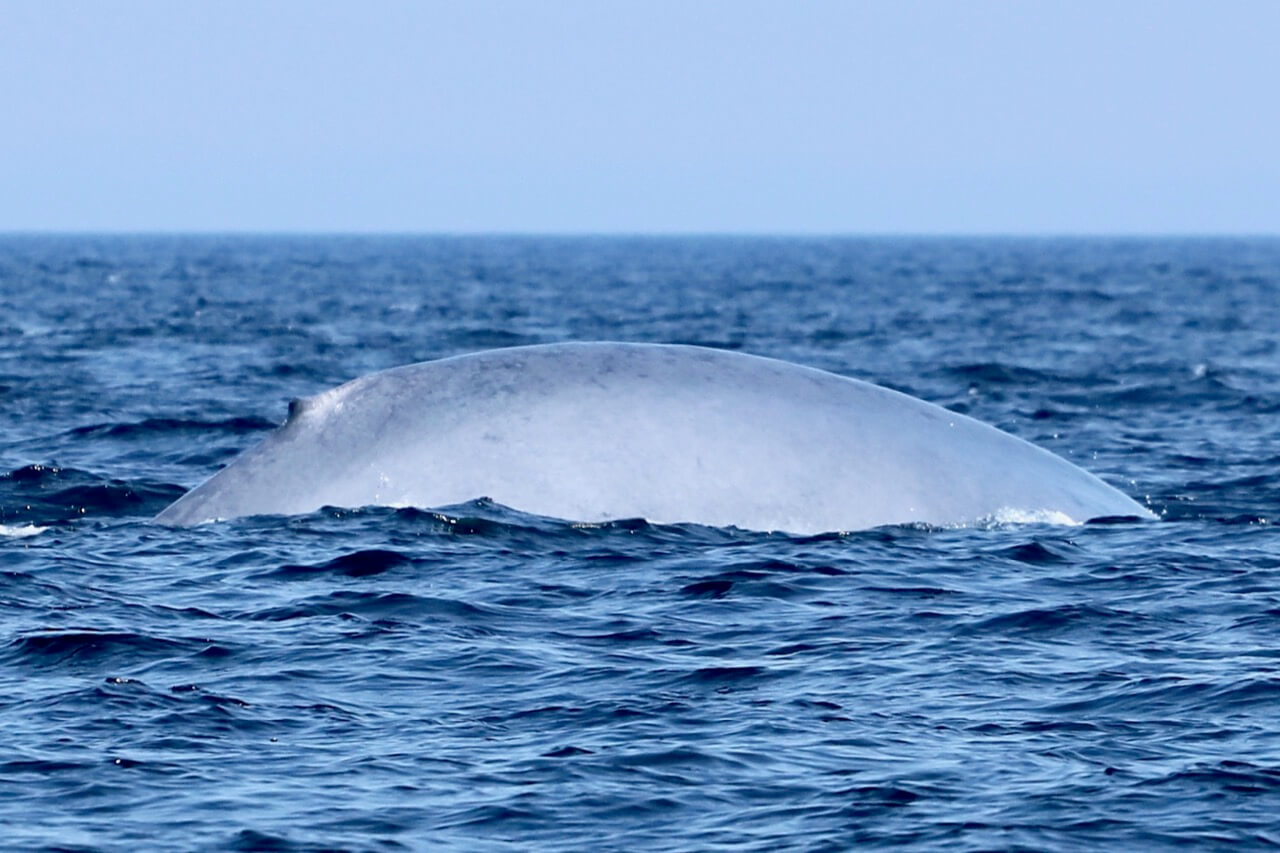The mild weather in the early part of the week offered comfortable conditions for venturing outside and contemplating the river. Did the higher temperatures have the same effect on marine mammals as they did on us? Whales don’t seem to have taken advantage of this thaw to be more conspicuous than usual to observers, as we have gotten wind of just three sightings, all of which were from a single region. In fact, weather usually has little effect on whale behaviour, as the animals must still surface to breathe, regardless of the temperature. It is sometimes our ability to observe them that can be misleading. This week, sightings were reported only from the North Shore region. In the Gaspé, ice cover is probably still too dense for the whales to venture close enough to shore to be seen.
Monday, from the shores of Sept-Îles, one observer spots two large rorquals east of Île Grosse Boule, three and seven nautical miles from the coast, respectively. The light colour of their backs suggests to the observer that they are blue whales. Are the two individuals travelling together? Perhaps. Blue whales emit very low-frequency sounds that can travel hundreds of kilometres. This species has been observed several times in the past few weeks. It is even believed that some individuals might remain in the St. Lawrence the entire winter. Which means that, despite the cold weather, the river offers a sufficient amount of krill, tiny crustaceans relished by blue whales. The same day, the observer also spots a seal, but is unable to identify the species.





